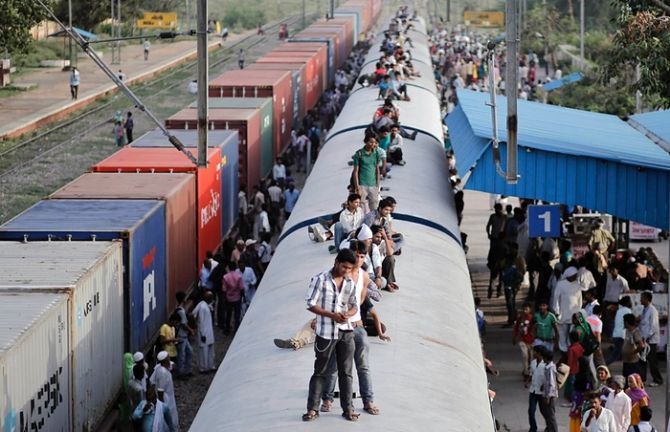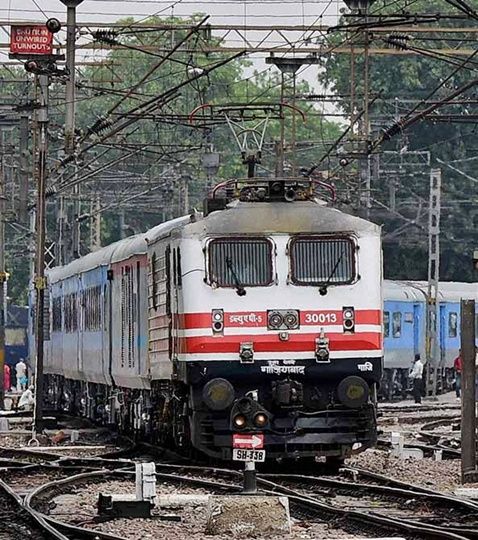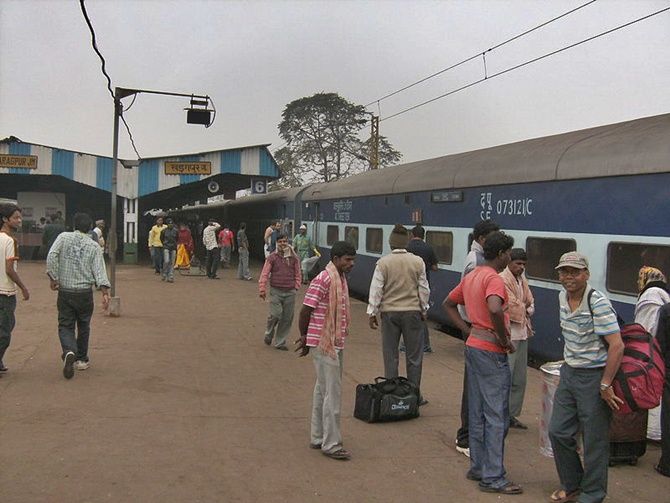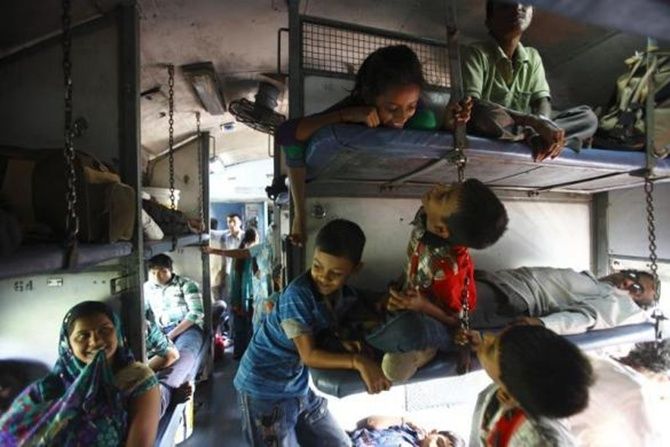If you don't rationalise the number of trains, there are limited options to de-stress the railways' high-density networks notes Bibek Debroy

How many railway stations are there in India? Oddly enough, the answer isn't straightforward, because there isn't an unambiguous definition of "station".
How does one count a halt, which may be because of operational reasons and not commercial ones?
Does one have a handle on the number of abandoned stations? How does one count a station that has two different gauges passing through?
And have you heard of Srirampur and Belapur stations in Maharashtra?

On one side of the track, the station is called Srirampur. On the other side, it is called Belapur.
Therefore, though the "official" IR (Indian Railways) figure on number of stations is 7,112, a figure that is 8,000-plus isn't necessarily wrong.
Not all stations are equally important and there is a classification from A1 to F.
This is a precise definition, but we needn't get into that.
Suffice to say, A1, A and B stations are more important than the others. A1 and A categories add up to 407.

If we wish to prioritise resources spent on station development, these are indeed the ones we should focus on.
The station with the most annual revenue is CST Mumbai, followed by Dadar.
Let's think of a railway route as a track that takes us from point X to point Y.
Some stations are junctions, in the sense that more than one route passes through that station.
To be called a junction, the norm is that at least three routes must pass through the station.

A junction leads to additional problems of switching and signalling. Roughly, there are around 300 railway junctions. Which junction has most routes passing through?
Obvious responses about a busy railway station won't work. "Busy" originating or terminating stations aren't junctions.
Actually, Mathura is the junction with most routes (six broad gauge, one metre gauge) passing through. Roughly, a cluster of 23 ordinary stations will have a junction, because that's when one will confront another route.
There are exceptions like Nagpur and Ajni stations, where distance between the two stations is only three kilometres. But in general, the distance between two stations is between six and eight km and the distance between two junctions is between 100 and 150 km.

To make the point, I am going to use a simple example.
Think of a single line track between two ordinary stations. At any specific point in time, only a single train, moving in either of the two directions, can be on that track.
In jargon, in this simple example, that track between two stations is called a block section.
Time will be spent on decision-making and the operating of signals, on the driver's perception and response, and on the train clearing that block section. Let's say 10 minutes for all this. What's a reasonable speed for this train?
Remember this isn't a Shatabdi or a Rajdhani. It stops at both stations.

The answer is that anything more than 30 km/hour is impossible. If for computational simplicity if we take the distance between two stations as 10 km, half an hour per train (adding the 10 minutes).
Thus two trains per hour, 48 trains per day, even if one ignores time required for maintenance of track.
That's the capacity of this block section. I recently met a MP who wanted more stops, more trains and greater punctuality.
That's a logical impossibility.
Out of 1,219 block sections on IR, 233 are at between 100 and 120 per cent capacity, 193 at between 120 and 150 per cent capacity and 66 at more than 150 per cent capacity.
This is especially serious on the high-density network, that between the metros.

If you want more, and faster, trains between Jodhpur and Jaisalmer, that's never going to a problem, not today.
But that's not where people want more trains.
There is an unaddressed issue of unviable routes.
There are routes on which there are few trains.
There is Ledo and there is Tundla. Within Delhi, there are stations on Delhi Ring Railway. But for the high-density network, options are limited.
Here are some: (1) Use technology to improve efficiency, including signalling. (Automatic signalling can de facto increase capacity by splitting the block into segments.)
(2) Reduce stops between junctions, so that throughput of trains through ordinary stations is faster.

(3) Back-of-the-envelope, badly-strained capacity is probably around 5,000 km of track. At Rs 10 per km, find the required Rs 50,000 crores.
But since these capacity constraints are on high-density networks, they don't fit the category of national priority projects and GBS (gross budgetary support) won't be available for this. (4) While one figures out how to find resources, rationalise the number of trains.
I said rationalise, I didn't say eliminate. Ignoring freight trains, does one need 13,000 passenger trains every day?
Why have passenger trains with rakes of eight or nine coaches? Such a merger and consolidation has already been carried out for goods trains, and some doubled trains have more than 120 wagons.
If all trains (segregated into three groups: Rajdhani/Shatabdi/Duronto, mail/express, and ordinary) have a template of 24 coaches, there will be no additional shortages because of consolidation.
One should probably start with the Allahabad-Kanpur-Varanasi-Mughalsarai stretch - symptomatic of capacity problems, since every day 400 trains pass through this stretch.
But IR is reluctant to touch (1) and (2) - and can't find the non-GBS of Rs 50,000 crores.
Bibek Debroy is a member of the National Institution for Transforming India, or NITI. Views are personal









